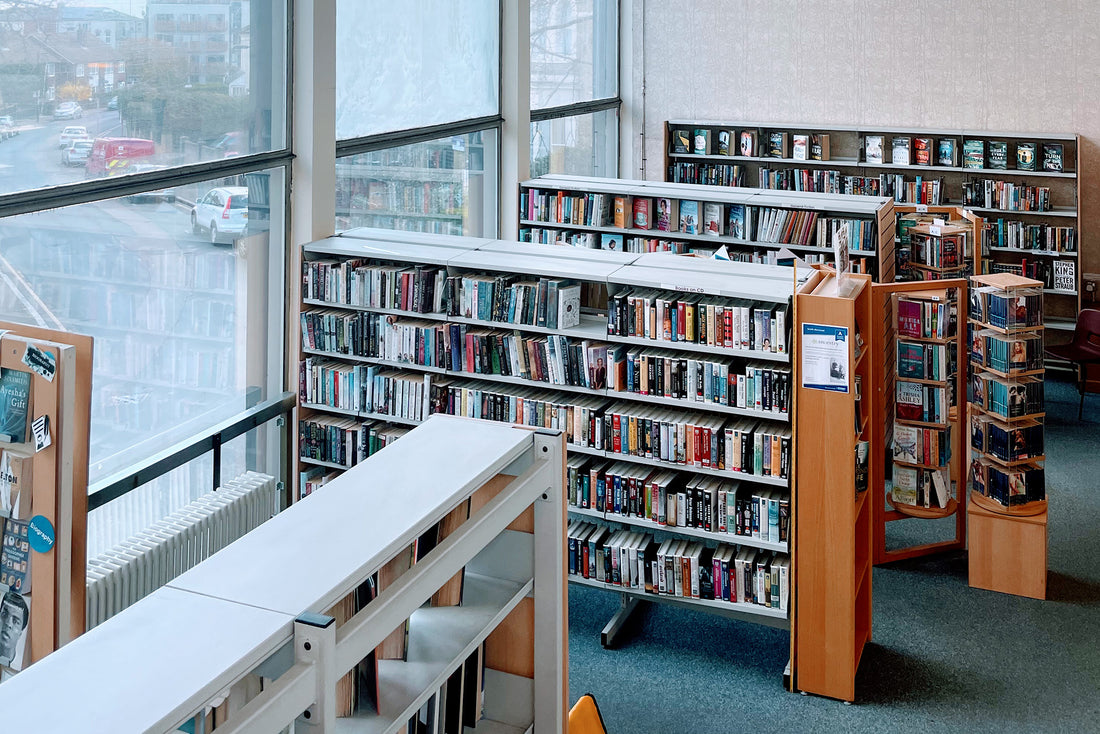
The Brutalist South Norwood Library has been saved, but there’s still work to do
Share
When the future of a Brutalist library in South London was threatened in 2021, locals Lynn Chambers and Verena Ammon launched a campaign to save it. While they have acheived their goal to protect and re-open the library, they continue the campaign to raise money for staffing and renovation work. Why do we have to fight so hard to save local heritage and services when they clearly add so much value to our communities? Richard Enright reports.
The South Norwood Library was inaugurated in 1968 and is a prime example of the purpose-built Modernist architecture of the era. Designed by Hugh Lea, Borough Architect for Croydon, the building is clearly influenced by Brutalism and features a large bush-hammered concrete cube nestled within its glass façade. The main interior space of the library occupies three floors which are flooded with natural light thanks to the floor to ceiling windows.
The space is characterised by its simple materials and transparency in keeping with the Miesian architecture that the library has often been related to. Lea’s design prioritises ease of use and enjoyment, embodying the civic pride and optimism of its post war era. A library has sat on the same site for over 100 years, and this most recent construction represents the aspiration of its time whilst sitting respectfully within its surroundings and history.
 (Photograph by Jo Underhill)
(Photograph by Jo Underhill)
Despite its unique architectural character, the library was not safe from the threat of property developers. In May of 2021 it was announced that the library was to be replaced by smaller building in a different location where it would operate with a reduced service. The old library would be sold to private developers and most likely demolished.
In response to these announcements a campaign to protect this special design was launched. Led by Lynn Chambers and Verena Ammon, the Brutalist Library Campaign SE25 sought to protect and preserve the local gem. “The support we have received has been overwhelming,” they said, “many people have shared their memories – librarians who were working at the library when it first opened in 1968, ex-local residents who have since moved away have shared personal photos.”
The campaign drew support from those across the South Norwood community who wanted to preserve their heritage and support local identity over uninspiring redevelopment. It also received support from the wider community of architecture lovers. “All kinds of people connected with us locally, nationally, and internationally. The global Brutalist appreciation community came out in force, so did the art community. From photographers, watercolour and sketching artists, illustrators, 3D model makers, bakers, knitting enthusiasts – so many talented people supported us by donating their creativity and time.”
In November 2022 the Mayor of Croydon Council Jason Perry announced that he was committed to protecting South Norwood Library as a result of the campaign and its popular support. Plans to replace the library have been scrapped and Lea’s design has been locally listed within the South Norwood Conservation Area.

(Photograph by Jo Underhill)
“With the news that South Norwood Library would stay in its purpose-built home we were incredibly relieved, but know that our work to protect and restore South Norwood Library cannot stop there,” the campaign told us. “Council funds remain minimal and maintenance for the grounds are sparse. At the current time, the library can only afford to open two days a week, and the building is in dire need of repairs.” The campaign continues to grow now that the building is safe, and is dedicated to its goal for the library to be accessible and future proof so that it can be enjoyed far into the future.
South Norwood Library’s story is about more than just a Brutalist gem, it teaches us about how architecture has the potential to unite people as a symbol of identity, history, and civic spirit. “By caring about a building or location, and highlighting the many positives of such a community asset, others find or rediscover value in it too,” Lynn and Verena told us. “By showing that the architect Hugh Lea had worked together with the Chief Librarian at the time to design a visionary, cultural space for all, many people realised how unique it was and therefore what a tragedy it would be to lose it”.
In a city where private development is on the rise like never before, The Brutalist Library Campaign SE25 reminds us of the lasting value that good public architecture can hold in our communities. We are glad that the South Norwood Library will continue to stand as a testament to that for generations to come.
---------------------------------------
If you are interested in learning more about Brutalist architecture in London and around the world, explore our collection of Brutalist maps and more:
Brutalist Architecture Collection
